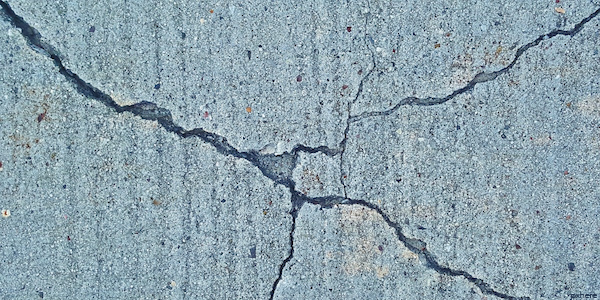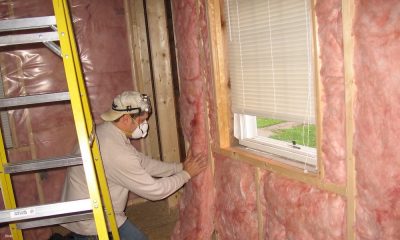Build
How to Choose and Purchase a Suitable Property to Subdivide

With the demand for housing in Auckland at peak levels and even smaller-scale properties showing substantial profit margins when sold, subdividing a lot into two or more sections has huge earning potential. Those with the means and capabilities to purchase land for the purpose of subdividing are almost certain to see a large return-on-investment, that is of course, as long as it is done correctly.
Choosing a property to subdivide while exploring real estate options requires the assessment of a multitude of factors. Whether or not a property is capable of being subdivided will depend on its size, its location and the physical layout of the property. It’s not always as easy as choosing the biggest section out there and splitting it down the centre.
Considerations are not just restricted to feasibility either. Property investors taking this route should always keep profitability at front of mind. The effort put into the property needs to be reflected in resale value. At times, just because you can subdivide, doesn’t mean you should.
Factors to Consider When Looking to Purchase a Property with the Potential to be Subdivided
The Size of the Property
When it comes to subdividing, size definitely does matter. Generally, the larger the section the better the earning potential will be. On the other hand, it’s important to keep in mind that section size will also affect overheads. Larger sections typically incur higher costs while performing due diligence.
Land Layout
Level land is important, it will be easier to build on and will be more appealing when it’s back on the market. If a potential section is uneven or has landscape issues, it can make property development more difficult. Choosing a property that is already level will allow a smoother process.
Steps should also be taken to assess how easy it will be for multiple households to live on the lot. Consider issues like driveway creation, road and utility access, and street frontage. These factors will affect council consent and appeal once you’ve placed your subdivided property on the market.
The Zoning Rules of the Area
How the area the property is located in is zoned will restrict the type of housing you are able to create and can even cancel out any plans to subdivide. Before purchasing a property, it is crucial to research council zoning restrictions and consider how they will dictate your subdivision plans. Choosing to work with a subdivision consultant will help you navigate this process if you aren’t sure about taking it on yourself.
Subdividing is one of the most profitable actions a property owner can take. The ability to sell two lots from the purchase of one can exponentially boost your earnings from your investment. Council restrictions and market appeal will have an impact on how your subdivision journey will play out. However, with these considerations taken into account while you search, it is entirely possible to choose a property that will offer worthwhile returns.
Build
Soil types: the key to structural problems for homeowners

Media Release On Behalf Of Mainmark
30 May 2018
Cracking walls and uneven floors are usually symptoms of a deeper problem. Many structural issues are the result of unstable ground or subsidence, so understanding what’s happening in the ground will help identify the cause of any structural effects that are happening to the building itself. Different soil types in particular give rise to different problems and require different solutions.
James O’Grady, Sales and Business Development Manager at ground engineering specialist Mainmark said, “Having an expert on hand who knows how soils behave can help make sure that when you solve one issue you don’t cause another. Getting it wrong can have disastrous results.”
“One home I recently visited was substantially damaged after a trench was dug beneath the floor to fix a leaking pipe. It was then back filled with sand,” he explained.
The property was built on reactive clay soil. The sand-filled trench created a channel that funnelled ground water under the home, saturating the clay and ‘heaving’ the entire building.
“The fix caused far more extensive damage than the original problem, all because the soil type hadn’t been considered.”
“Understanding soils is key to finding an effective, sustainable solution to structural issues, so it’s important to get advice from both structural and geotechnical experts before deciding on the right remediation plan for your situation,” said O’Grady.
The soil types commonly encountered in ground remediation work include reactive clay, sand and silt, fill, and organic soils. Each have different characteristics and require different solutions to address building subsidence issues.
Reactive Clays
Structural problems often result from varying moisture levels in reactive clay soil. It swells when wet and shrinks when dry causing subsidence in drier, or heave in wetter, areas. Over- saturated clay also loses its bearing capacity causing building footings to settle in the weakened soil and can sink even further if it dries out. It often gets oversaturated by moisture from broken sewers and storm water pipes, burst mains or sometimes even poor overland drainage.
Mainmark’s Teretek® resin injection solution is generally used to re-level buildings and remediate issues in foundation ground. It is ideal for smaller, discrete areas typically affected by reactive clay soils and works well to strengthen building foundations. It expands in the ground on application, both compacting and strengthening the soil. Teretek is applied at very precise and specific injection points, and is a less invasive process than traditional underpinning remedies, as it doesn’t require extensive excavation and subsequent backfilling.
Sand and Silt
Structures on sand and silt soils often experience settlement caused by ground water, a natural underground watercourse or a leaking sewer or storm water pipe. The finer grains are washed away leaving larger grains to settle, and the building’s footings and foundations become unsupported, compromising the structure above.
Permeation Grouting can remediate these problems by binding or ‘cementing’ the soil particles together. This stops the water flow, halting the migration of fine material, and strengthening the soil to support the structure above.
Alternatively, in very soft ground, Teretek resin injection can be an effective solution. Resin injection as an engineered solution is also suitable for mitigating liquefaction in sand and silt soils and has been successfully used to remediate earthquake damaged homes and commercial buildings in Christchurch, where it is recognised in the MBIE Module 5 in NZ for earthquake strengthening.
Fill
Fill is earthen material placed and compacted in a hole or depression. It can consist of soil, and can also include aggregate, rock or crushed construction waste. Structures built on fill are susceptible to the same issues as those on sand and silt, as fill is also prone to settlement, especially when water flows wash away finer material. Settlement is worse if the fill is poorly compacted.
Teretek resin injection is an effective remediation solution for fill soils. It works by binding the fill to provide extra strength and alleviate the problem of poor compaction. It is non-invasive, quick and cost-effective, as it can be applied in situ under existing structures, without the need for major excavation work, or manual compaction.
Organic
Organic soils, especially peat, are weak and highly compressible. This makes them prone to settlement as the weight of any structure causes compaction. Primary settlement decreases over time, but can total 100s of millimetres, resulting in significant structural issues.
When building on organic soils, it’s important to balance the total overburden by using soil substitution. Terefil®, a very strong yet lightweight cementitious fill, can be used to replace the top soil layer and provide a new-build platform. It can withstand significant pressure, maintaining its integrity under heavy loads, and is lighter than soil.
For more information and advice about how to address these types of ground problems, contact Mainmark on 0800 873 835 or visit www.mainmark.com.
Kim Viney at Write Away Communication + Events
Email: [email protected]
Build
Warkworth – Auckland’s newest satellite town
Formerly a long weekend getaway destination for Auckland City residents the town of Warkworth and surrounding communities – Matakana, Omaha, Snells Beach, are rapidly expanding into what will likely become Auckland’s next satellite town. Situated a mere 45 minute drive from downtown Auckland, the greater Warkworth region has been earmarked in the Auckland Council’s ten year plan as the area of greatest residential growth.

Formerly a long weekend getaway destination for Auckland City residents the town of Warkworth and surrounding communities – Matakana, Omaha, Snells Beach, are rapidly expanding into what will likely become Auckland’s next satellite town.
Situated a mere 45 minute drive from downtown Auckland, the greater Warkworth region has been earmarked in the Auckland Council’s ten year plan as the area of greatest residential growth.
This has been driven by plans to extend the Northern motorway which currently ends at the Johnstone tunnels, just south of Puhoi. The project, which is set for completion in 2021, will mean residents in Warkworth can simply get onto the motorway and drive straight through to the city.
While Warkworth, like most of the rest of the country, has seen a dramatic surge in housing prices, it remains a cheaper option than most Auckland suburbs (with the exception of the highly sought after coastal community of Omaha). The average value of a house in Warkworth Township in April 2017 is $717,400, the seaside village of Snells Beach (12 minutes from Warkworth) has an average value of $728,600 and the fishing village of Leigh sees the average home valued at $811,550.
Local Warkworth builder, Mike Bronkhorst, owner of DuraBuild Construction, comments how development of new homes in the region has been
“A lot of new land has been released for development in Omaha, Matakana and Warkworth – has seen the construction industry around here really take off”
“I founded DuraBuild in 2012 with just myself and one other employee. From here we have grown to a crew of over 20 workers – the sheer volume of new housing projects around Warkworth has meant reputable building companies have really been able to flourish”.
With the region expected to grow by an additional 20,000 people in the next 20 years, heavy government investment in local road networks aims to ease the strain on the already heavily congested roads.
“The road networks need to catch up to the residential development. On some days it can take upwards of 50 minutes to get from Matakana to Warkworth, a journey which usually takes under 10 minutes”.
A recent proposal aimed at easing heavy congestion between Matakana and Warkworth sought to connect Matakana Road to SH1 further north of the now infamous Hill Street intersection. However this was rejected at public consultation due to what locals believe is a mere short term fix, pushing for a solution which will connect directly to the new motorway.
While the Warkworth region looks set to be Auckland’s next satellite town, combining an attractive beach based lifestyle with future ease of travel to Auckland city, local infrastructure will need to be upgraded for the area to truly flourish.
-

 Management5 years ago
Management5 years agoHome Insulation Requirements
-

 Investment5 years ago
Investment5 years agoAnother date NZ property investors are dreading
-

 Accounting & Finance5 years ago
Accounting & Finance5 years agoLow Interest Rates Winners and Losers
-

 Management6 years ago
Management6 years agoAttracting More Business Travellers To Your Auckland Airbnb Property
-

 Investment6 years ago
Investment6 years agoWould You Be a Landlord in 2018?
-

 Tenants6 years ago
Tenants6 years agoCoworking Countdown – 4 Things to Prepare Before You Move In
-

 Renovations6 years ago
Renovations6 years agoFive easy steps to boost the appeal of your home
-

 Tenants14 years ago
Tenants14 years agoWindow Coverings in Rental Properties – Nets, Curtains or Blinds?





